Have you ever wanted to visit the verdant forests of Chile? Or to gaze up at giant Redwood Conifers in California whilst birds of prey swoop over you? Maybe taking a trip to a tea house in the mountains of Bhutan in Asia? What if I told you that you can all go without leaving the UK with a weekend trip up to a gorgeous, hidden and breathtaking spot in Scotland? This article will tickle your far-flung travel taste buds with Benmore Botanical Gardens, where you can visit Chile, Bhutan and California without leaving the UK.
Travel is a huge inspiration for me as a garden designer, and if you've followed me on social media, you will know that when I get any spare time, I spend it exploring. Visiting new countries and, more importantly, gardens help expand my planting knowledge. Even the smallest detail or newly discovered plant can set me off uncovering design ideas. You don't need to be a garden designer to feel this inspiration. So when I got the chance to visit Benmore in my motorhome, I jumped at the chance.
Where is Benmore Botanical Gardens?

Benmore Botanic Garden, situated in the picturesque region of Argyll, Scotland, is a garden renowned for its vast and diverse plant collections from South America, Asia and beyond. Owned by the Royal Botanic Garden Edinburgh, Benmore spans over 120 acres, offering a captivating journey through a range of themed landscapes.
Once inside you are met with multiple paths and journeys through and up in the the wilderness of this garden.
It must be said this is not a 'Sunday stroll' garden, it's for the most adventurous plant lovers. Whilst there is a tea room at the base, most of the garden is accessed with hiking boots and as soon as you leave the safety of the car park, a vast landscape awaits you. However, it's well worth the effort for what I believe to be one of the best-kept secret botanical gardens in the UK.
What to see at Benmore?
Benmore holds a unique set of attractions for the plant and gardening lover. Scale is the big draw at Benmore. No other botanical garden holds the impressive grandeur, size and scale of its planting schemes. Whether that's champion trees (the largest specimens of their type), intricate exotic structures from Asia and South America or simply the views across the surrounding mountains or gullies. Benmore does things on a huge scale, making it a full day out.
Redwood Connifers
The first thing you are greeted with at Benmore is the huge 150-year-old giant Redwood conifers. As soon as you cross through the gates this avenue of height and elegance awaits. These specimens are not for every garden given just how huge they grow but are worth the visit alone. Instantly, you're transported to California's Sequoia National Park. The Sequoiadendron giganteum was planted in 1863 and stands 50m tall, which, to humans, seems huge. However, these trees are mere babies as they have been known to live for 3500 years, reaching an ultimate height of 110m tall.
Rhododendron Collection
Due to Benmores naturally acidic soil (for plants that are known as calcifuges), it's a prime location for acidic-loving Rhododendrons, and during the springtime it's literally on fire with colour explosions of their world-class Rhododendron displays.
Benmore has over 3000 different species of Rhododendron, from giants to microplant specimens. Giving you food for thought in your gardens for springtime colour. One favourite is Rhododendron sinogrande, which has irresistible cream flowers in April. Rightly so, Benmore is sometimes referred to as the textbook on Rhododendrons.
If you have acidic soil, it's a great garden to visit to help experience how Rhododendrons can be planted and underplanted to perfection. I took many notes on some rarer species when I was there to introduce into my garden designs.
Tasmanian Fernery
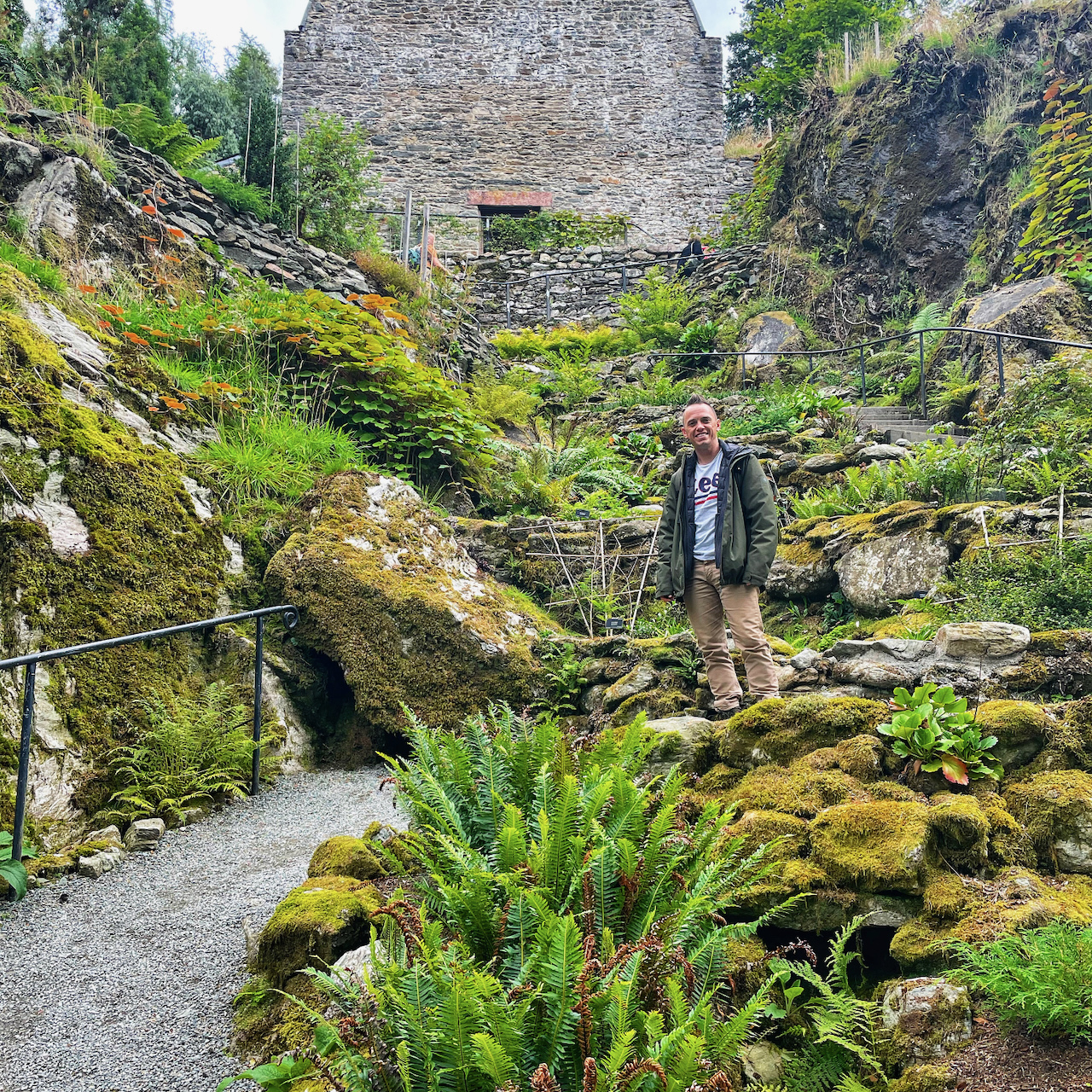
The traditional glass fernery, originally built in 1870, has been lovingly restored and takes you to a place where dinosaurs could have roamed. What's interesting isn't just the huge class fernery but the Tasmanian planting that the team at Belmore have used to nest and hug the fernery. Plants such as Eucalyptus, Cedars and Huon pines exclusively found in Tasmania have been planted so that in years to come, their area will feel like a trip south of the Equator. The unique microclimate at Benmore means these rare plants can thrive in these sheltered pockets.
The fernery itself is a welcome escape from the outdoors as the humidity inside rises and beautiful ironwork awaits you. The sound of running water brings a meditative experience to the place.
Bhutanese Glades
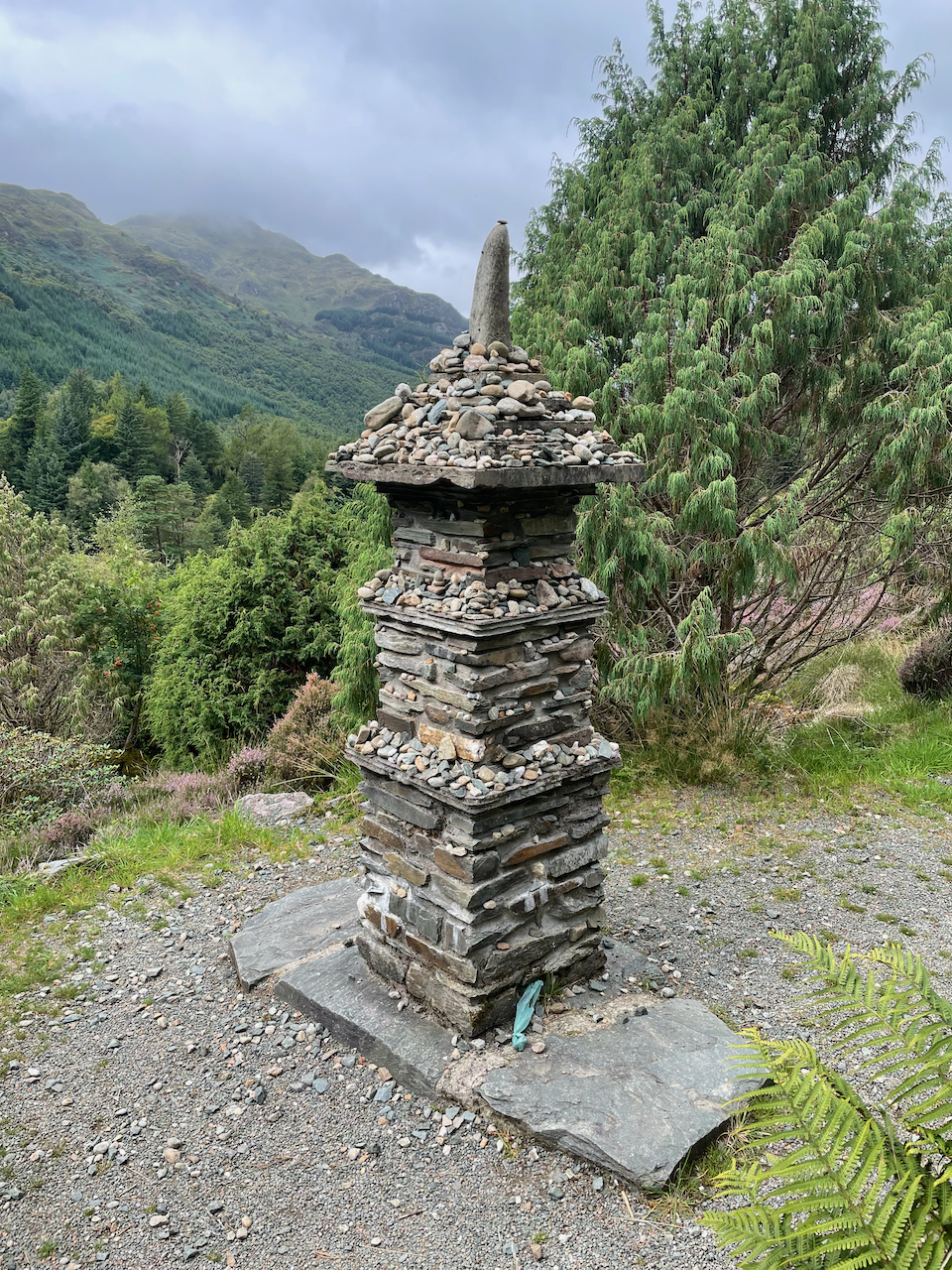
Fancy a trip to one of the hardest-to-reach forests in Bhutan? Well, Benmore has recreated this unique flora with 5 different vegetative zones to explore as you ascend further and higher into the garden. Some plants will be familiar, such as Birch and ferns, but other specimens were grown from seeds collected in Bhutan. Juniper, fir and other scrubland plants give a rich 'far away' feel to this part of the garden and the climb up the path should be taken leisurely to let the garden's wonder infuse inside your mind!
As you climb up through this part of the garden, you are met with the traditional Bhutan Pavilion as a rest stop on your journey. Look out back down the garden, and I challenge you to try and work out where the garden begins and ends as the forest vista seems to expand beyond the horizon. This is a great place for a flask of coffee and some cake whilst you imagine you are thousands of miles away in Bhutan.
Chilean Rainforest
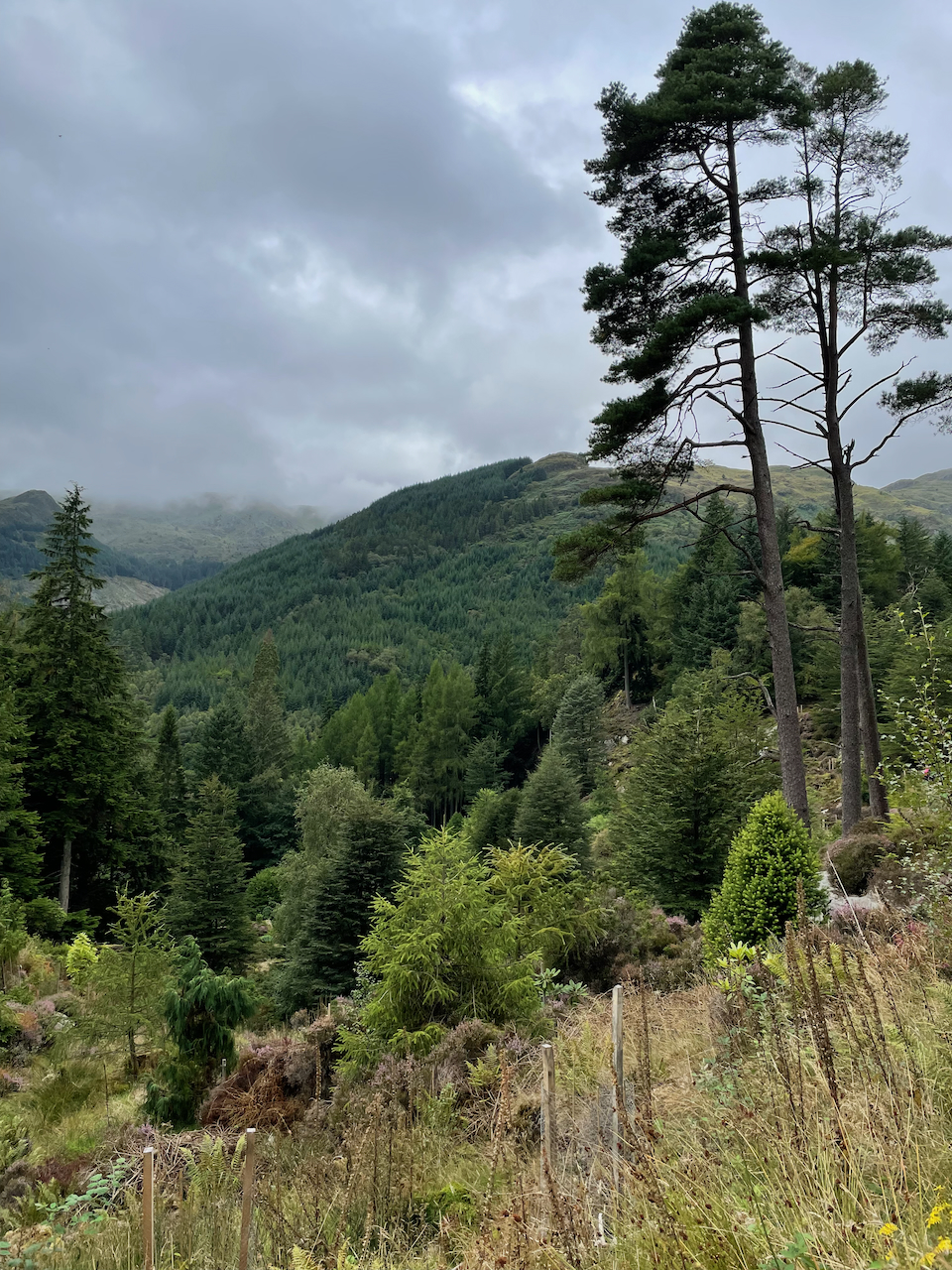
Monkey puzzle trees are not just the reserve of 1970s front gardens. Here, these trees are planted in their homeland to give a sense of grandeur. The Chilean garden is all about scale with its large specimen trees and unusual evergreen shrubs that live under said trees' canopy.
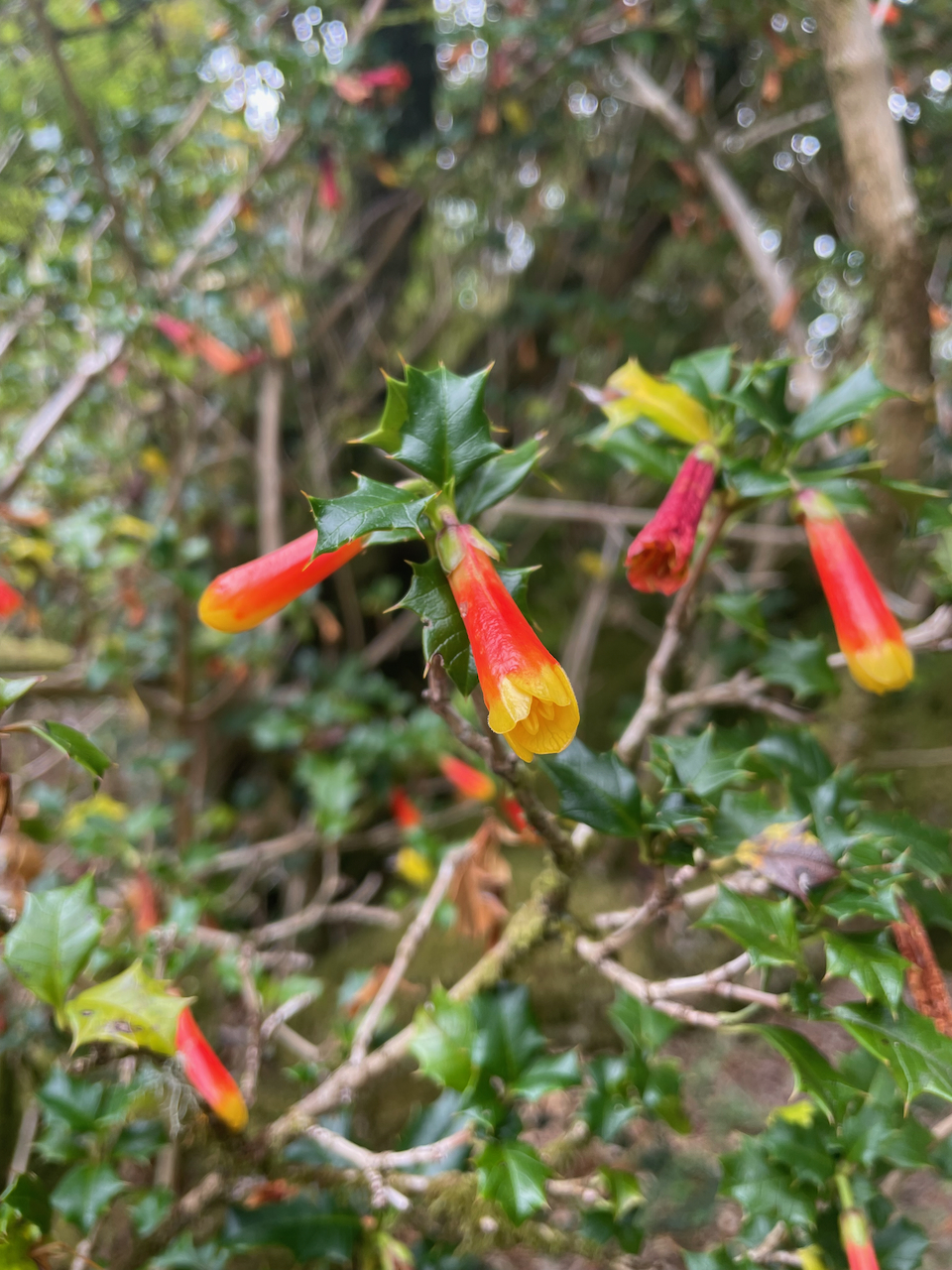
What I found particularly interesting in this part of the garden was the Chilean Holly (Desfontainia fulness), which when I visited was in flower. Covered in bees and insects, this firecracker of an evergreen shrub thrives here. Suitable for high altitudes and even being covered in snow for most of the winter, this is an exciting shrub which I believe should be more mainstream in residential gardens, especially exposed gardens with free-draining soil. The long flowers are usually frequented by hummingbirds, but in the UK, bees and wasps have learnt to cut holes in the top of the flower to access the nectar. Clever stuff!
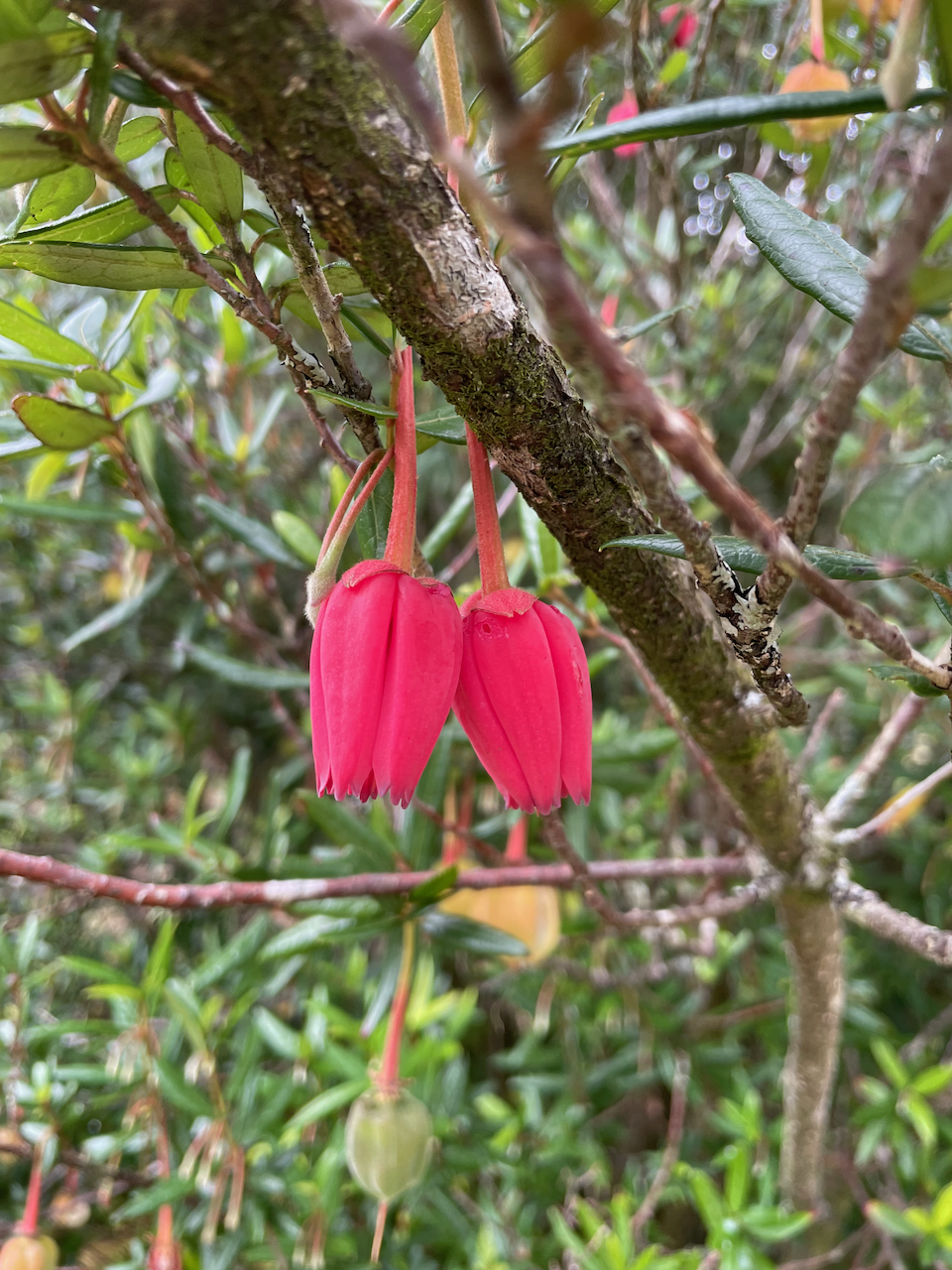
Another unusual shrub is the Chilean lantern flower (Crinodendron hookerianum) with its pendulous red lantern-shaped flowers. A fan of wet soil in a sheltered position, this half-hardy evergreen tree is not for the beginner gardener as it has very exacting humidity and temperature requirements. So enjoy it thriving here rather than trying to grow this one yourself.
Japanese Valley
The Japanese valley originally just contained Japanese cedars (Cryptomeria japonica), which were planted in the 1970s, but since 2005, a plethora of Acers and Birches by the hundreds have been planted on precariously steep slopes. This wonderful mix brings autumnal wonder to the garden as the leaves change to reds, yellows and oranges, acting as a bookmark to the year. On misty days, you really do feel like you could be high up in the mountainous regions of Japan's islands.
Summary
If you're feeling like you've already got jet lag from reading this, I wouldn't blame you! There is so much to see at Benmore Botanical Gardens you really do forget just where in the world you are. A true testament to the botanical stewards of this garden over the past 150 years. I could easily while away a full day at Benmore as the weather and clouds change almost as quickly as the continents you travel through. While the scale is huge, the combination of herbaceous perennials, ferns, and shrubs will give any gardener food for thought to create a more diverse-looking garden at home. So what's stopping you from grabbing your boots, a train ticket and some supplies and visiting Benmore?
Happy Gardening, Lee
About Lee
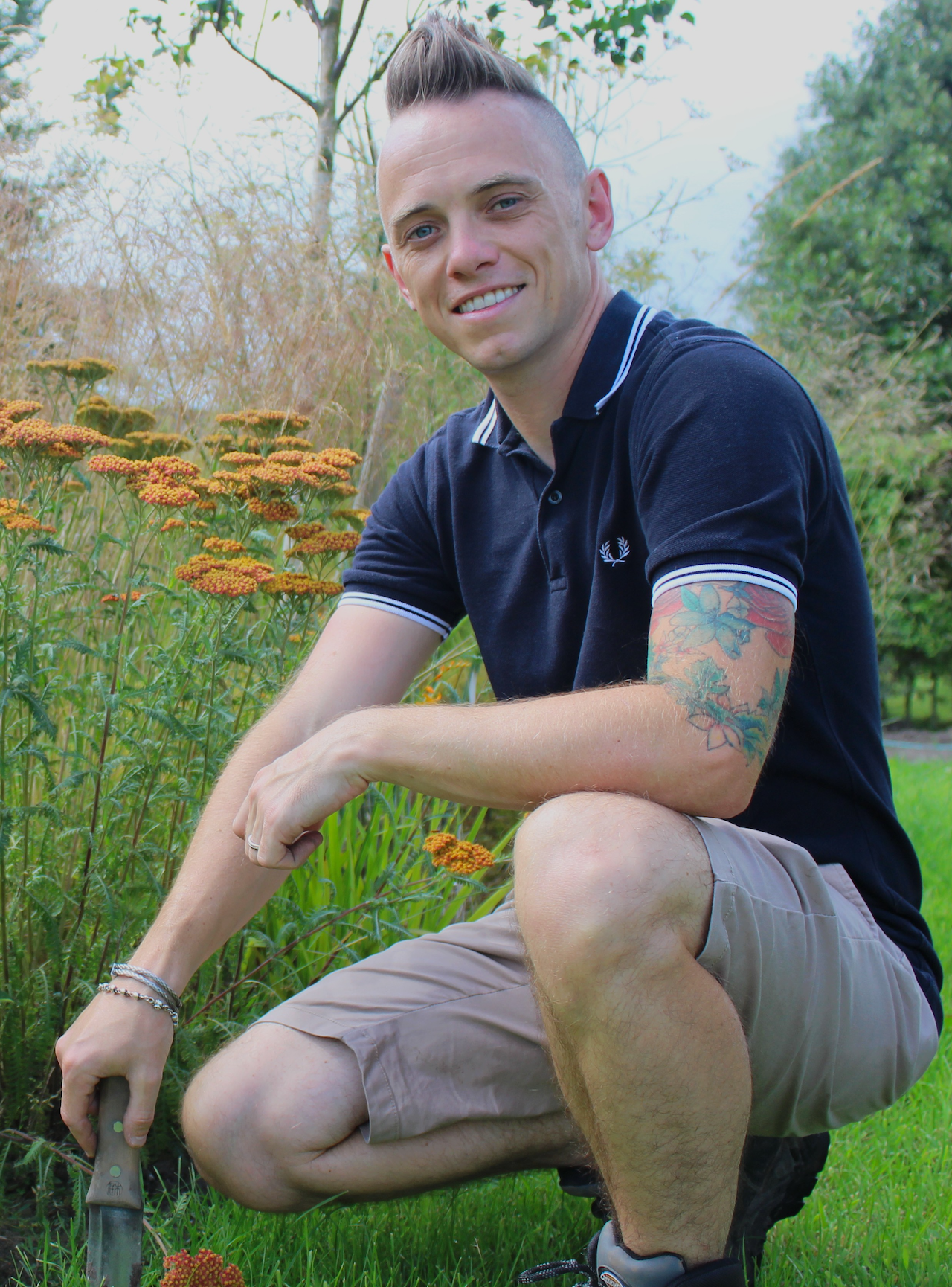
Lee Burkhill aka the Garden Ninja is a multi-award-winning garden designer, horticulturist, garden blogger, vlogger, TV Presenter and YouTuber. Hailing from the North West of England, Lee has an infectious enthusiasm for helping gardeners all over the world. The Garden Ninja is his garden design business and online gardening blog, and he was recently voted one of the Top 10 Gardening Bloggers and Garden Vloggers in the UK. Lee is also part of the BBC Garden Rescue Team, which you can watch on weekdays at 3.45 pm on BBC One or on BBC iPlayer. Here at Lazy Susan, we’re looking forward to sharing his exclusive horticultural tips, tricks and advice on our blog.
Follow Lee 



Please note that all the photographs in this article were taken by Lee and are the copyright of The Garden Ninja.



